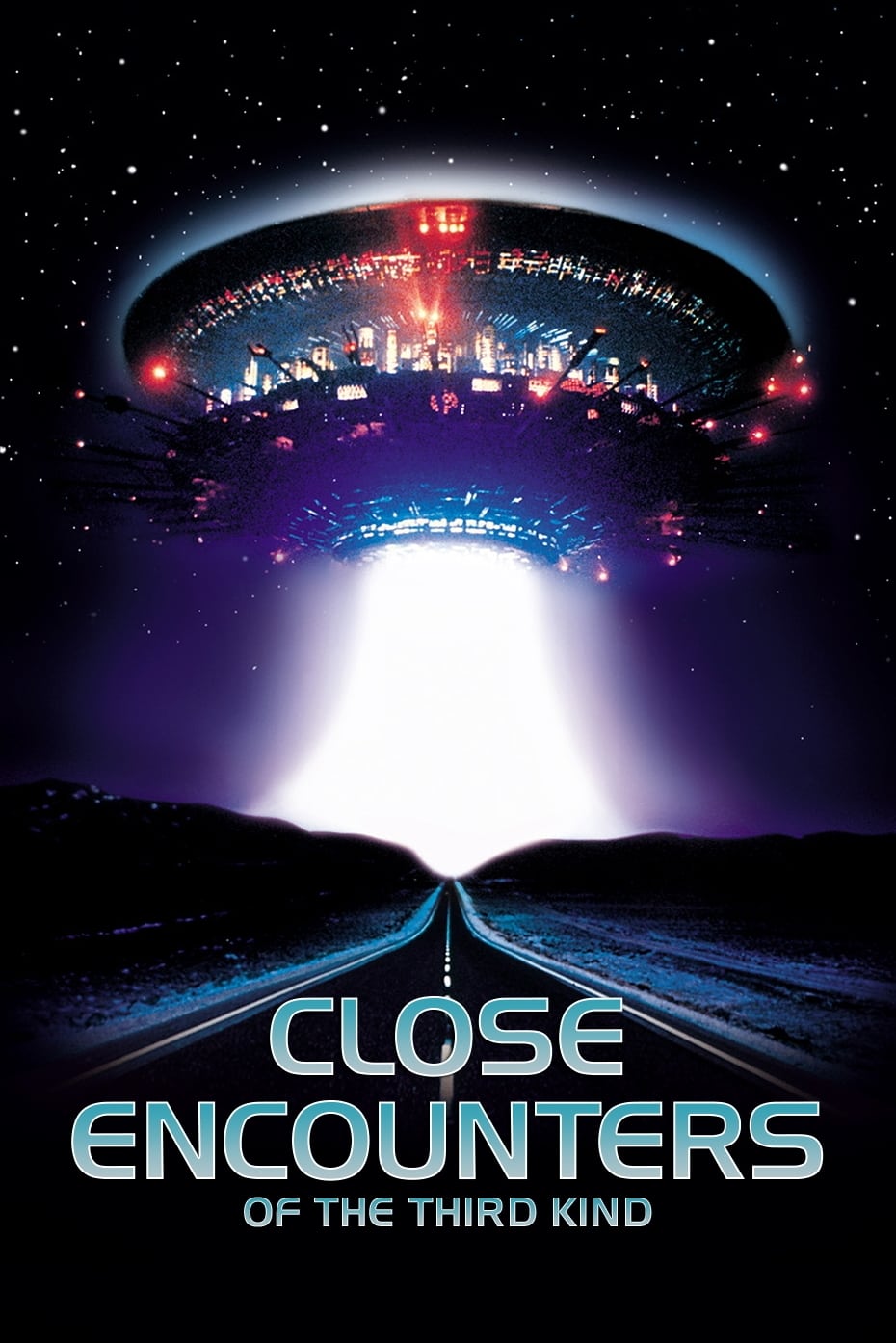
After an encounter with UFOs, an electricity linesman feels undeniably drawn to an isolated area in the wilderness where something spectacular is about to happen.
22 Jan Close Encounters of the Third Kind (1977)
The Third Narrative
I give Spielberg little credit, even claim that he has taken us several steps backward in how we use our visual imagination. And for that he deserves distain. But he was not always excessively vulgar, visually lowbrow. Before ‘ET,’ he did some strongly visual work and he tried hard to work in an intelligent way.
This film is his most purely visual. You can watch it entirely with no sound, or if you are clever, with music but no dialog. It is not well framed. It does not do anything interesting with the camera eye. It does not invent a style, or innovate in any way. But it does read visually. And it does paint effectively with light. Today after 25 years, that use of light still shines.
This film is also his experimentation with exposure to great thinkers in film. The film itself doesn’t have any great ideas, but you can see Spielberg’s striving. He casts Truffault in the role of the representative of the human race, the one man who knows more than anyone else. For those who don’t know, Truffault was possibly the most articulate person ever in the film world: he weaves so compelling a story that after a career as a critic he launched the ‘new wave,’ a notion that is all intellectual force but completely devoid of ideas.
Pairing him with Balaban is symbolic. He (with his dad) is one of the intellectuals of Hollywood. Spielberg was also able to enlist Attenborough’s help for the Indian scenes. (Attenborough was filming ‘Ghandi.’) Attenborough was also considered a fulcrum of thought in Hollywood. Paul Schrader wrote the script, the man at the time with the most visual writing style.
Schrader’s first script focused on the idea that visions create themselves with the obvious extra level that films and everything in them are invented by the viewers. Thousands or millions of people simultaneously converge on a single meme (here a musical theme or a landscape feature or the very notion of ‘others’) and bring it into existence. When talking about film, this is an idea expressed by Schrader, Truffault, Balaban and Attenborough. Framing it in terms of UFOs is a brilliant conceit. Unfortunately, Spielberg tarted it up along the way, but that sort of proves the point doesn’t it?
I believe that films invent the collective imagination, so it is no surprise that after this appeared the details of UFO sightings changed to conform. Just as shark attacks, both real and imagined, greatly increased after ‘Jaws.’
As the vision itself, one is tempted to contrast this with ‘Contact,’ ‘2001′ and ‘Mission to Mars.’
‘Contact’ was wonderless, and lacked a centre — either visual or philosophical — but had a clever machine. ‘M2M’ had a much more intelligent eye (the audience becomes god), a more elaborate encounter, and better attention to consistent art design. Same with ‘2001.’ The difference between the two is in what god they invest. Kubrick invests in a god of space (not outer space) so infuses his film with environmental causality. This is what dePalma does more directly with the eye that makes things happen. Either is vastly more intelligent than what Spielberg can do, but not what he set out to do here.
Posted in 2002
Ted’s Evaluation — 3 of 3: Worth watching.


No Comments